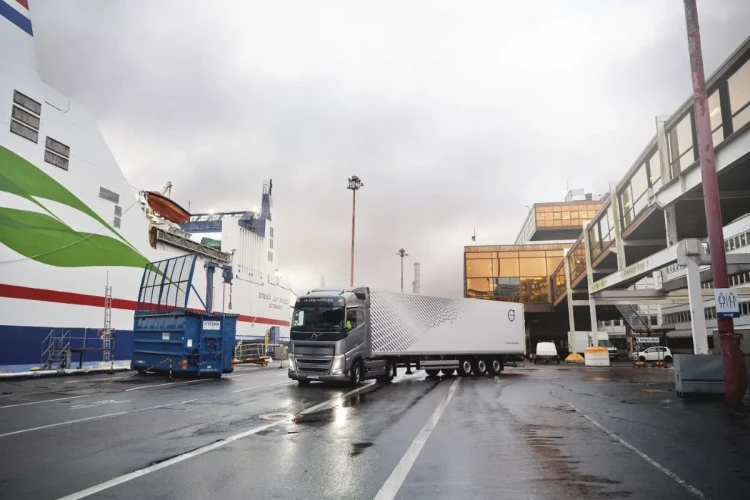Volvo Group reported a 10% year-on-year decline in global truck deliveries in Q2 2025, citing lower demand in North America and a slower-than-expected shift to electric vehicles.
Volvo delivered 52,764 trucks between April and June 2025, down from 58,935 in the same period last year, according to the company’s Q2 financial report. Truck net sales fell 14% to SEK 81.7 billion, or 7% when adjusted for currency effects.
The decline was primarily driven by reduced deliveries in North America (down 20%) and Europe (down 5%). Deliveries also fell in South America (–15%), Africa and Oceania (–21%), and to a lesser extent in Asia (up 5%).
Order intake remained flat at 47,761 trucks, suggesting subdued momentum despite stabilisation in some markets. Service sales rose by 2% adjusted for currency, helping to offset some of the decline in vehicle sales.
In Europe, total order intake grew by 21%, driven by a 154% surge in light-duty truck orders following a previous model changeover. However, total deliveries in the region fell by 5%, mainly due to lower light-duty volumes.
Volvo’s market share for heavy-duty trucks in Europe rose to 19.8% in May, up from 16.8% the previous year. Renault Trucks, also part of Volvo Group, increased its share to 10.5% from 8.2%.
In North America, truck deliveries dropped to 12,981 units, while orders declined by 16% amid what Volvo described as “a wait-and-see mode” among customers. The company cited uncertainty around new tariffs and the forthcoming EPA 2027 emissions standards.
Globally, deliveries of fully electric trucks decreased by 7% to 1,029 units. However, order intake rose by 53% to 1,002 vehicles. Volvo attributed the slow pace of deliveries to infrastructure gaps and the limited availability of incentives.
“The societal transformation to zero-emission vehicles is slower than previously anticipated,” said Martin Lundstedt, Volvo Group’s President and CEO. He added that while Volvo has the necessary products, key enabling conditions such as charging infrastructure and demand stimulus are still lacking.
Costs related to the delayed EV transition amounted to SEK 3.9 billion in the quarter. This included SEK 2.9 billion in compensation payments due to renegotiated battery volume commitments and SEK 1.6 billion in asset impairments.
The adjusted operating margin for the truck business fell to 10.3%, down from 13.9% a year earlier. Reported operating income for the segment declined 59% to SEK 5.5 billion.
Competitors show uneven progress in Q2 While Volvo’s Q2 results reflect subdued demand and slow electric truck adoption, competitors are showing early signs of recovery, though from a weak base.
Daimler Truck rebounded strongly in Europe after a soft Q1, helped by a sharp quarter-on-quarter rise in electric vehicle deliveries. Its focus remains on scaling battery-electric volumes, particularly under the Mercedes-Benz Trucks brand, which it aims to position as a zero-emission leader by 2030.
Traton Group, meanwhile, saw a mixed performance. MAN posted a strong quarter-on-quarter recovery and led the group’s electrification efforts, while Scania continued to lag behind both in conventional and electric truck volumes. The overall trend suggests fleet replacement activity may be resuming in parts of Europe, but market confidence remains uneven.
Across the board, rising electric truck deliveries remain concentrated among early adopters, with infrastructure gaps and cost concerns continuing to slow wider uptake. Manufacturers appear to be using Q2 to recalibrate production, pricing, and strategy ahead of more decisive shifts expected later in the year.






